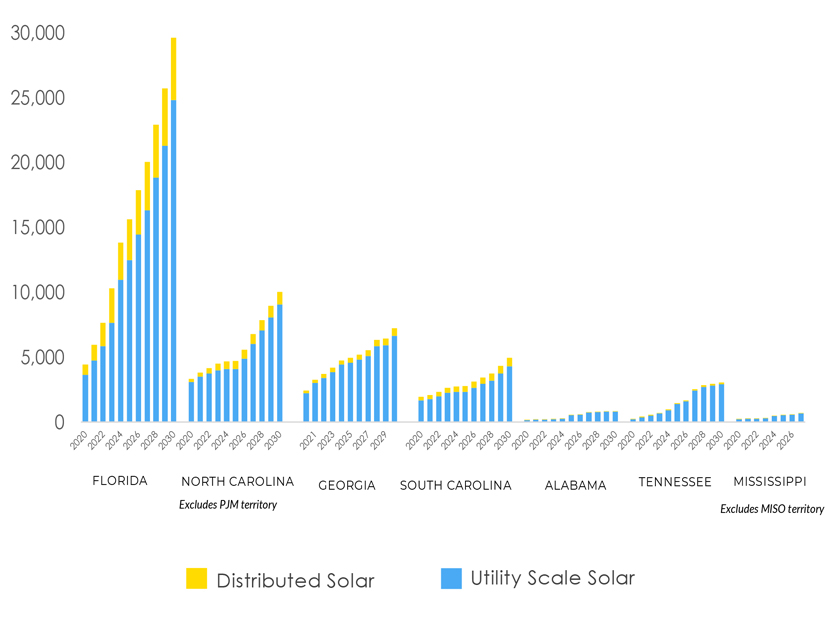Portland General Electric is exploring an alternative to the Western Power Pool’s Western Resource Adequacy Program (WRAP) that better suits its upcoming participation in CAISO’s Extended Day-Ahead Market, the utility has told Oregon regulators.
PGE expressed its intention in an Oct. 29 letter to the Oregon Public Utility Commission explaining why the utility was withdrawing from the WRAP ahead of the Oct. 31 deadline to commit to the program’s first “binding” — or penalty — phase covering winter 2027/28. Oregon rules require the state’s investor-owned utilities to participate in either a program such as WRAP or a state-run RA program.
The tone of the letter suggests PGE likely is closing the door on future participation in WRAP as developments point to an alternative program taking shape in the West.
“We are pursuing alternatives to WRAP that better align with the EDAM market to maximize the value to customers,” Sujata Pagedar, PGE senior director of regulatory and governance, told OPUC in the letter. “By maintaining open dialogue and focusing on shared objectives, we believe we can collectively build a framework that delivers lasting benefits for the region.”
The Oregon-based utility was one of five WRAP participants to notify WPP of their withdrawal by Oct. 29, although other dropouts are likely. (See 4 Entities Join NV Energy in Exiting WRAP, While Idaho Power Commits.)
Even before NV Energy conveyed its formal notice of withdrawal on Oct. 27, utility officials told Nevada regulators they were in discussion with other future EDAM participants about developing an alternative to WRAP. (See EDAM Participants Exploring Potential New Western RA Program.)
Asked whether PGE was participating in those discussions, utility spokesperson Drew Hanson told RTO Insider: “It is less about a specific new RA program and more about remaining committed to regional collaboration and actively exploring alternative resource adequacy solutions.”
‘Unwavering’ Commitment
In the letter to OPUC, Pagedar said PGE’s “decision was not made lightly” but reflected “the fact that there are significant unresolved uncertainties in the program design, reliability metrics, technology readiness and governance — with no clear timeline for resolving these issues and implementing necessary changes in time for PGE to adequately prepare the March 31, 2027, forward showing submittal for the first binding season, effective Nov. 1, 2027.”
She noted that PGE was a “foundational member” of WRAP, “worked diligently” to move to binding operations as quickly as possible and was the first participant to receive a “passing” score on the operations program report during the “nonbinding” phase.
Still, PGE had identified critical shortcomings.
Among those was WPP’s proposed realignment of the WRAP’s operation subregions with CAISO’s EDAM and SPP’s Markets+ (compared with the previous Northwest/Southwest breakdown), which Pagedar said was necessary for a “robust” RA framework but posed too much risk without postponing the first binding season.
She said such “a complete realignment in such a compressed timeline creates substantial risk regarding how these metrics will be recalibrated and how those changes will impact participants’ capacity demonstration and financial exposure” during the first winter binding season.
Pagedar said PGE was concerned about the outcome of efforts by the WRAP’s Planning Reserve Margin Task Force to evaluate new methodologies for setting planning reserve margins for program participants.
“These changes directly impact deficiency charge calculations and the risk profile for participants. The changes to the PRM methodology and timeline could directly impact the calculation of resource capacity contributions,” she wrote.
PGE expressed concern about the “technical readiness” of WRAP, which is being operated on behalf of WPP by SPP, saying the forward showing and operations platforms appear to “lack the technical stability and responsiveness needed for a binding adequacy program” and that user interface and system issues that “raise doubts about the operator’s ability to implement changes in time for market participants to adjust their IT systems.”
Pagedar concluded that PGE has an “unwavering” commitment to collaborating on regional RA.
“We will continue to work with partners across the West to advance solutions that strengthen reliability, affordability and resilience for all customers,” she wrote.
